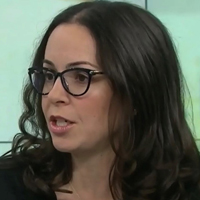
For most Canadians, 2019 was a good year. Unemployment was low and wages were high. Even so, about 54,000 Canadians filed for consumer bankruptcy. When Canadians declare bankruptcy, they give up most of their assets in return for an immediate halt to debt collection efforts and, after nine months, the cancellation of most of their debts. Another 70,000 filed a consumer proposal, an alternative to bankruptcy that, for example, allows debtors to keep their homes while repaying their debts over three to five years. Many others are close to the edge: more than half of Canadians report not having enough savings to carry them through more than the next pay period if they lose their jobs.
This year will be worse. Along with a life-threatening pandemic, unemployment will be very high. That means higher unpaid credit card bills and perhaps an increased reliance on high-cost loans (such as payday loans) as Canadians struggle to survive. Expanded government benefits and relief being offered voluntarily by the big banks, utilities, telecoms and government creditors will assist some temporarily. But the longer-term effects of COVID-19 on the debts owed by Canadians will not be known until well after the stay-at-home orders are lifted.
For those in financial trouble, bankruptcy is probably unnecessary or unhelpful right now. Courts are closed for non-emergency matters, and without access to the courts, the range of actions that creditors can take to collect from debtors is limited. They could decide not to take any enforcement action; or they could make an agreement with a debtor (called a forbearance agreement) to take no immediate enforcement action in return for the debtor acknowledging that the creditors have the right to make future collection efforts.
During this apparent lull in bankruptcy proceedings — the most recent figures available show that filings were down 8.5 percent in March 2020 compared with March 2019 — regulators should consider systematic reforms to the bankruptcy system. Most people who eventually file for bankruptcy first spend a long time — two to five years — in the “sweatbox,” struggling to repay their debts. So, although COVID-19 is likely to create more financial distress for households soon, the demand for bankruptcy may not increase right away. There is time for regulators to put reforms in place before they are widely needed.
One important reform is to make bankruptcy more accessible. The major barrier is cost. Bankruptcy trustees, who operate the private businesses that administer the process under the supervision of the Office of the Superintendent of Bankruptcy, typically charge $1,500 to $2,000. Because bankruptcy can wipe out far more debt than the cost of filing, even a $2,000 fee is a bargain for those who can afford it.
How do debtors pay a trustee’s fee when they are in such dire financial straits? For the few with significant assets, the trustee will sell the assets and take a percentage of the proceeds. For those with relatively few assets — the vast majority of consumer bankrupts — paying the trustee becomes a major obstacle. With few assets for the trustee to sell, many low-income people simply cannot generate enough money to pay the fee. Without the protection from creditors provided by bankruptcy, debtors can then face harsh debt collection efforts and punishing payment terms.
To help those who cannot afford conventional bankruptcy, two countries have created bankruptcy procedures that are aimed at debtors who have few assets, low income and debts within a specified range. New Zealand has operated its No Asset Procedure since 2007, and the United Kingdom instituted Debt Relief Orders in 2009. In both cases, the cost is relatively low or non-existent, and debt forgiveness comes quickly. There are rules are in place to protect against abuse.
To be eligible for New Zealand’s No Asset Procedure (NAP), the debtor must have no assets apart from the tools of their trade, basic household items and a car valued at up to NZ$5,000. A means test is required to determine whether the debtor’s income is so low that there is little chance that the debts can ever be repaid. Debtors who have used the NAP before or were previously bankrupt are not eligible. The debts owed (excluding student loans) must total between NZ$1,000 and NZ$50,000. The program is administered by the New Zealand Insolvency and Trustee Service, a government agency, and charges no fee. Acceptance into the NAP stops any collections by creditors, and after 12 months, debts are forgiven.
The Debt Relief Orders (DROs) available in the United Kingdom are aimed at debtors who have total debts of less than £20,000 and assets totalling less than £1,000. Debtors must have a monthly income that is less than £50 above a threshold based on the debtor’s household budget. Most unsecured debts can be discharged through a DRO, except court fines, child support orders and student loans. Unlike those in New Zealand, debtors in the UK can apply for relief again, as long as at least six years has passed. Debtors can apply for DROs only with the assistance of “approved intermediaries” — government-subsidized debt advisers such as the Citizens Advice Service or the StepChange Debt Charity — and must pay a one-time fee of £90. Once a DRO has been approved, creditors cannot take action against the debtors. If the order is completed successfully, debts will be discharged after 12 months.
The UK and New Zealand have put public agencies in charge of managing insolvencies, including the low-cost NAP and DROs. Canada is unique in using only trustees, who run for-profit businesses, to administer bankruptcies. It seems unlikely that Innovation, Science and Economic Development Canada, the federal government department that would oversee any legislative change to the bankruptcy system, would be eager to start administering bankruptcies itself, but it could create a program and open it up to agents other than trustees to operate on a not-for-profit basis. For example, credit counselling agencies and community groups could be authorized to handle simple low-cost bankruptcies, as long as they agree to be more closely regulated by the government.
In an article published shortly before the pandemic, we estimated that 10,000 to 15,000 Canadians would take advantage of such a system each year. Given the ongoing surge in unemployment in Canada and the already high consumer debt levels, we suspect that the numbers of people who would benefit will continue to grow.
COVID-19 has created an opportunity and a need to rethink how we handle the insolvencies of the many Canadians with few assets and little income. Practical alternatives to Canada’s expensive and outdated personal bankruptcy system exist. Now is the time to design and implement a low-cost alternative for Canada.
This article is part of the The Coronavirus Pandemic: Canada’s Response special feature.
Photo: Shutterstock.com, by Thomas Andre Fure









